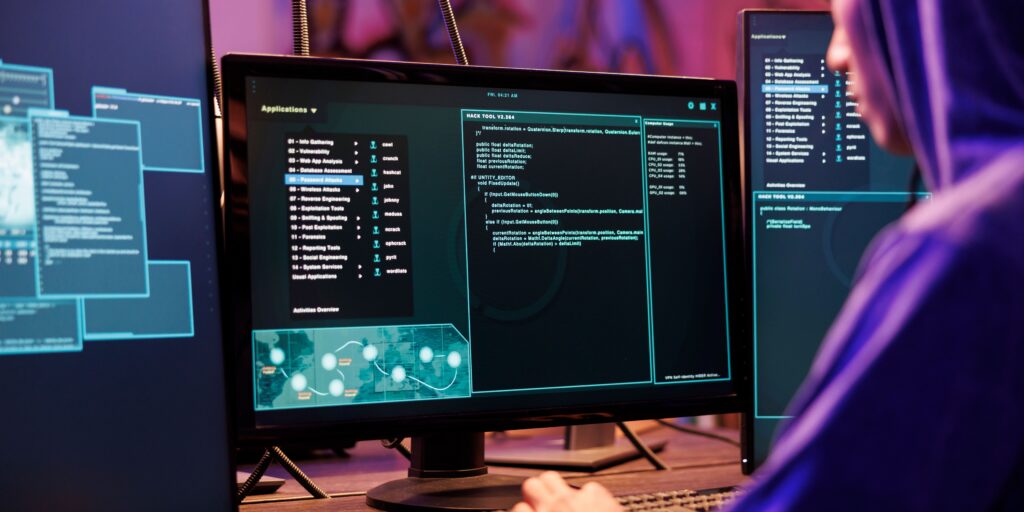Coding Trends to Watch Out for in 2024

In the fast-paced and ever-evolving landscape of software development, creating secure and high-quality applications is paramount. From securing user input to implementing multiple layers of defense, following coding standards, and maintaining an intuitive yet effective architecture, each aspect plays a crucial role in delivering robust software. In this comprehensive guide, we’ll explore Secure Coding Practices that You Can Implement Now in 2024 to ensure the security and quality of your codebase.
Input Validation:
- Implement robust input validation mechanisms to prevent malicious or invalid input from disrupting or compromising your system.
- Utilize techniques such as data type validation, format validation, length validation, and pattern matching to ensure the integrity of user input.
Authentication and Authorization:
- Utilize strong authentication methods like multi-factor authentication (MFA) to protect user access.
- Enforce proper authorization controls to restrict access to sensitive functionalities based on user roles and permissions.
Data Encryption:
- Employ encryption techniques to safeguard data at rest and in transit, ensuring confidentiality and integrity.
- Use strong cryptographic algorithms and key management practices to mitigate the risk of data breaches.
Regular Patch Management:
- Stay vigilant about software vulnerabilities by promptly applying security patches and updates.
- Keep development frameworks, libraries, and dependencies up-to-date to mitigate the risk of exploitation by known security vulnerabilities.
Error Handling and Logging:
- Implement robust error handling mechanisms to gracefully handle exceptions and prevent information leakage.
- Maintain comprehensive logging practices to monitor application activities and facilitate incident response and forensic analysis.
Secure Configuration:
- Configure development environments, servers, and databases securely, following industry best practices and security guidelines.
- Disable unnecessary services, apply access controls, and employ firewalls to reduce the attack surface and enhance system security.
Code Reviews and Security Testing:
- Conduct thorough code reviews to identify and remediate security flaws early in the development lifecycle.
- Integrate automated security testing tools into your continuous integration and deployment pipelines to detect vulnerabilities proactively.
Security Training and Awareness:
- Foster a culture of security awareness among developers and stakeholders through regular training sessions and knowledge-sharing initiatives.
- Empower your team with the necessary skills and insights to recognize and address security threats effectively.
Data Sanitization:
- Ensure data integrity and security by implementing data sanitization techniques to remove malicious or harmful characters from user input before transmission.
- Use whitelists, blacklists, and escaping techniques to sanitize data effectively and prevent potential security breaches.
Principle of Least Privilege (PoLP):
- Adopt the Principle of Least Privilege to limit user access rights, ensuring that users, processes, or systems have only the minimum levels of access necessary to perform their designated tasks.
- Grant specific permissions for resources, functions, and data, and regularly audit and revoke unnecessary permissions to minimize the attack surface.
Architecture:
- Design a unique and secure architecture foundationally to the success of your application, incorporating threat modeling to identify potential security threats.
- Implement layered security, use secure communication protocols, enforce authentication and authorization mechanisms, and regularly conduct vulnerability assessments and penetration testing.
Intuitive Yet Effective Architecture:
- Maintain an architecture that is both intuitive for developer understanding and effective in meeting functional and non-functional requirements.
- Follow clear system design principles, adopt modular design, prioritize user experience, and ensure standardized processes across the organization for consistent security practices.
Deny Access by Default:
- Proactively restrict access to resources or functionalities by default, implementing access control lists (ACLs), role-based access control (RBAC), firewalls, and network segmentation.
- Minimize open ports and services, restrict file access permissions, and regularly review and revoke access to maintain a secure environment.
Defense-in-Depth Strategy:
- Implement multiple layers of security at different levels of your application to create redundancy and resilience against cyber threats.
- From perimeter security and identity management to application security and continuous monitoring, each layer contributes to a robust defense mechanism.
Secure Work and Communication:
- Protect digital assets by securing work and communication channels, including device encryption, secure communication protocols, strong authentication, and secure file storage.
- Whether working remotely or in an office, these practices safeguard digital assets, maintain privacy, and ensure the confidentiality of sensitive information.
Quality of Code and Coding Standards:
- Ensure robust and maintainable software by maintaining code quality and adhering to coding standards.
- Conduct code reviews, enforce coding standards with automated tools, focus on modularity and test coverage, and prioritize security to create a healthy and reliable codebase.
By incorporating these additional secure coding practices and strategies into your development processes, you can further fortify the security posture of your applications and mitigate risks associated with evolving cyber threats. Stay informed, stay vigilant, and prioritize security and quality at every stage of your development journey.
